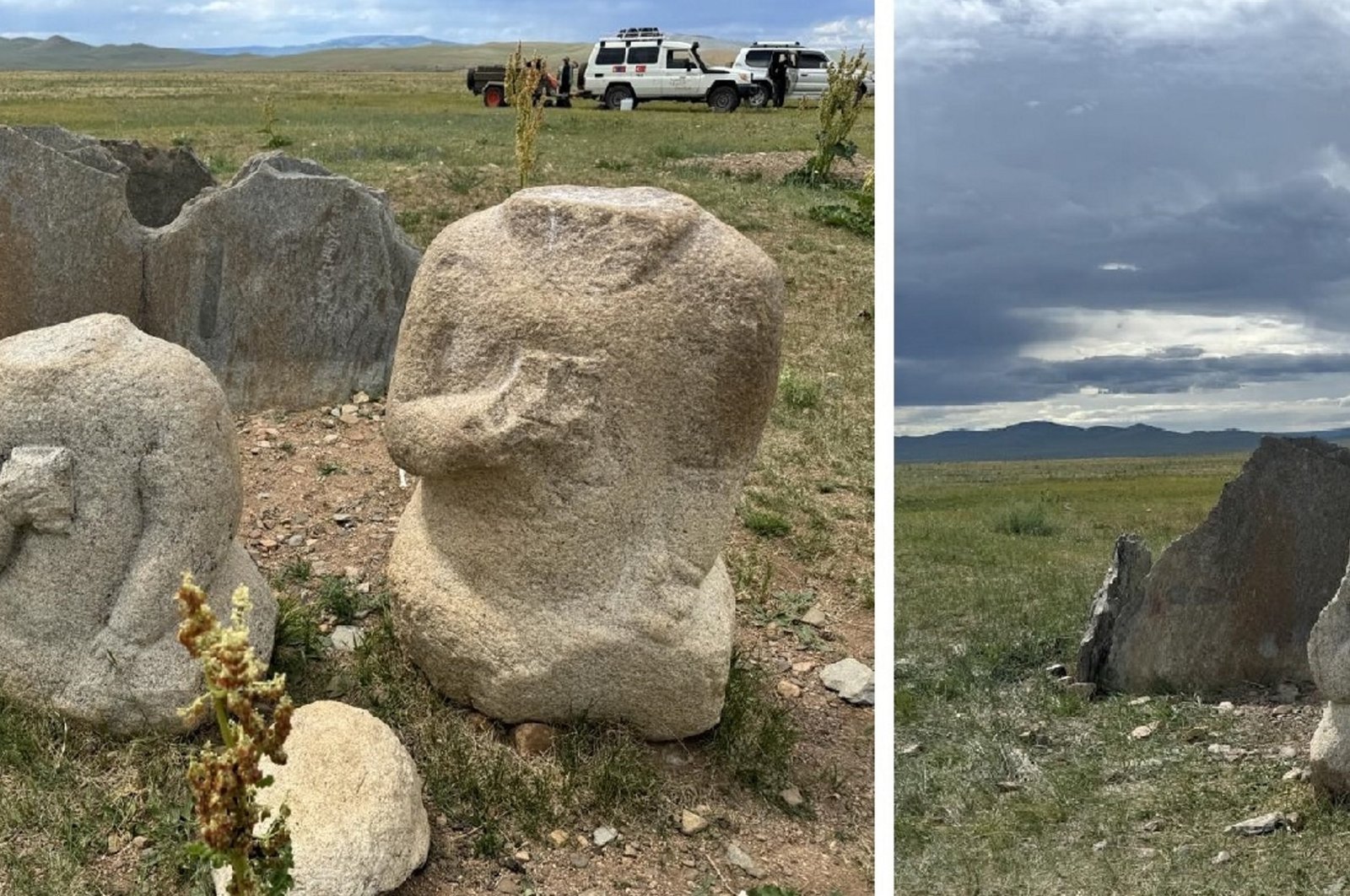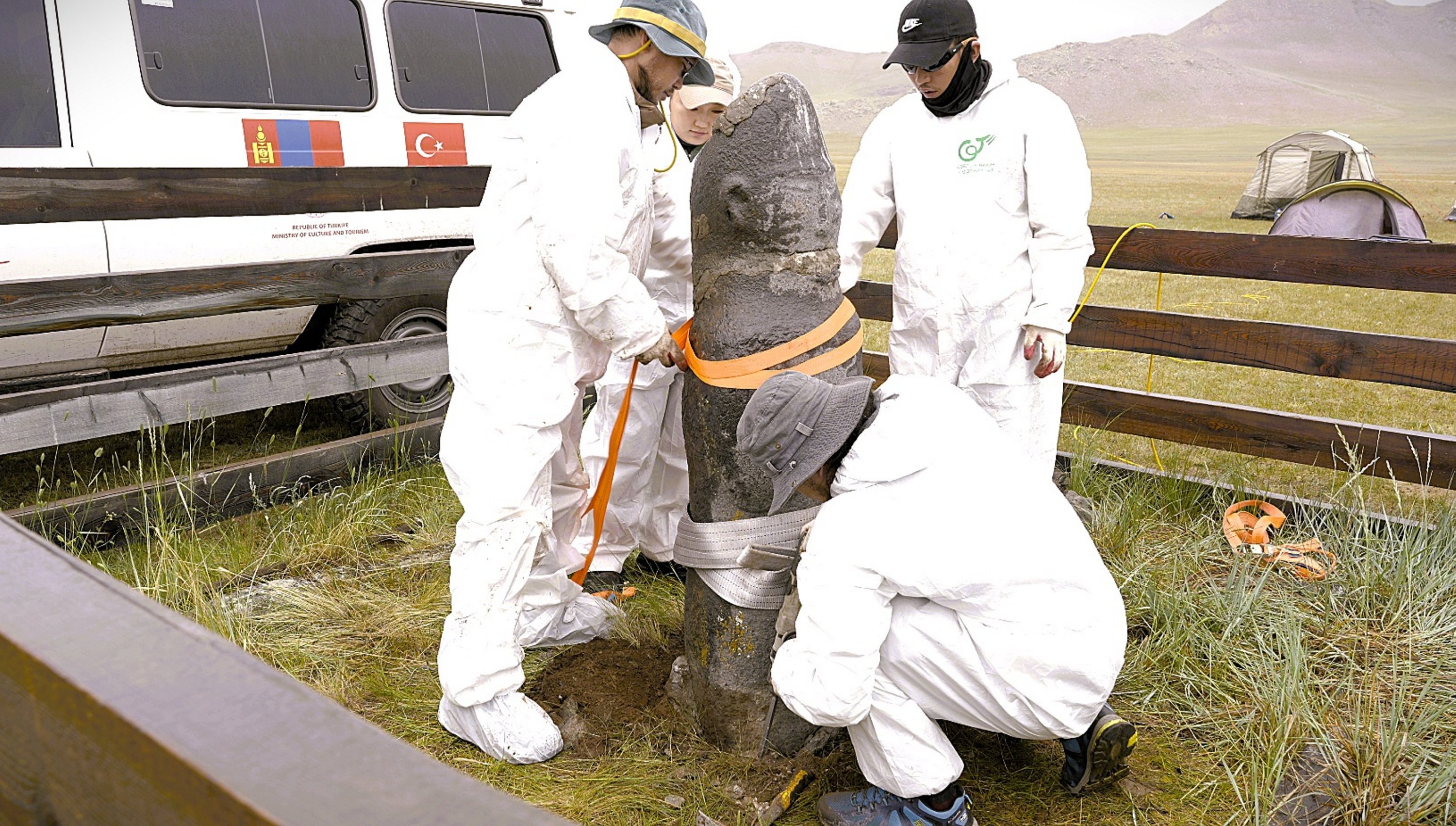
Turkish and Mongolian experts carried out photogrammetric documentation, restitution, restoration and maintenance of damaged and endangered artifacts from the Göktürk era in the Arhangay, Övörhangay and Töv provinces of Mongolia, with the support of the Turkish Cooperation and Coordination Agency (TIKA).
Human-shaped stone figures (known as "stonefathers") discovered in Mongolia to date serve as significant sources for explaining and determining the religion, culture, art, life and beliefs of the nomads during the periods they were made.
To date, 785 stones related to five periods – starting from the Bronze Age, including the Göktürk, Uyghur, Khitan and Mongol eras – have been discovered in Mongolia, with many belonging to the Göktürk period.
A significant number of these, which are parts of tombs or tomb complexes, have not been moved to museums to preserve the context of their locations and are exposed to all types of damage in nature.

TIKA has initiated work to restore 10 human-shaped stones that are considered the most damaged and at high risk.
The restoration work was carried out using a mobile laboratory previously provided by TIKA to the Mongolian Cultural Heritage Center.
Şaban Doğan, director of the Türkiye Office of the IKÇÜ-MUIS Turkology Research Institute, and experts from the Mongolian Cultural Heritage Center traveled approximately 4,000 kilometers (2,485 miles) during the project to examine the damage on Göktürk era human-shaped stones at the Ongi River complex monuments, Öngöt complex monuments, Altan Sandal Mountain complex monuments, Honiçiyn Gol and Godron Tolgoy.
